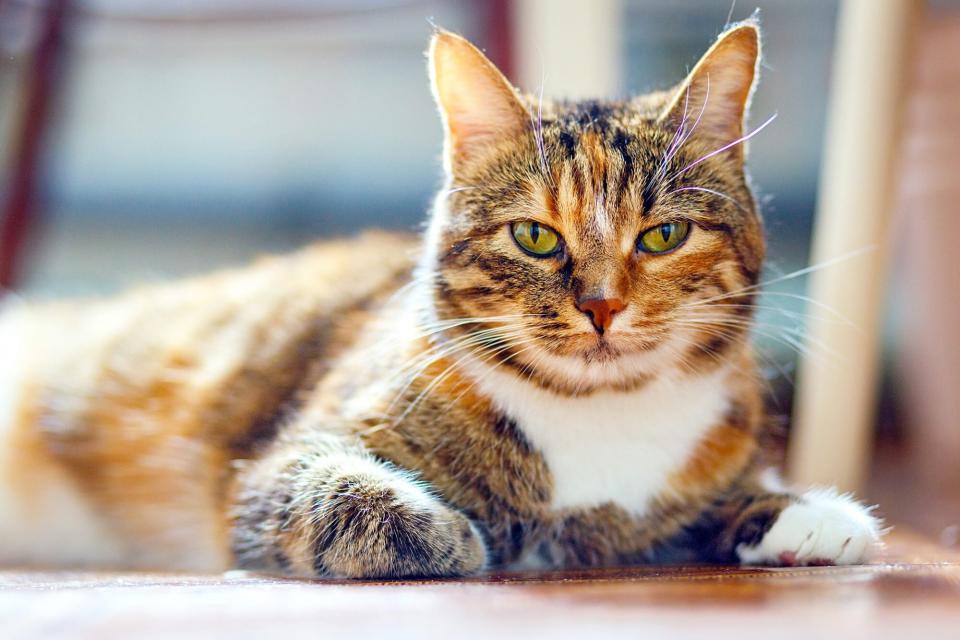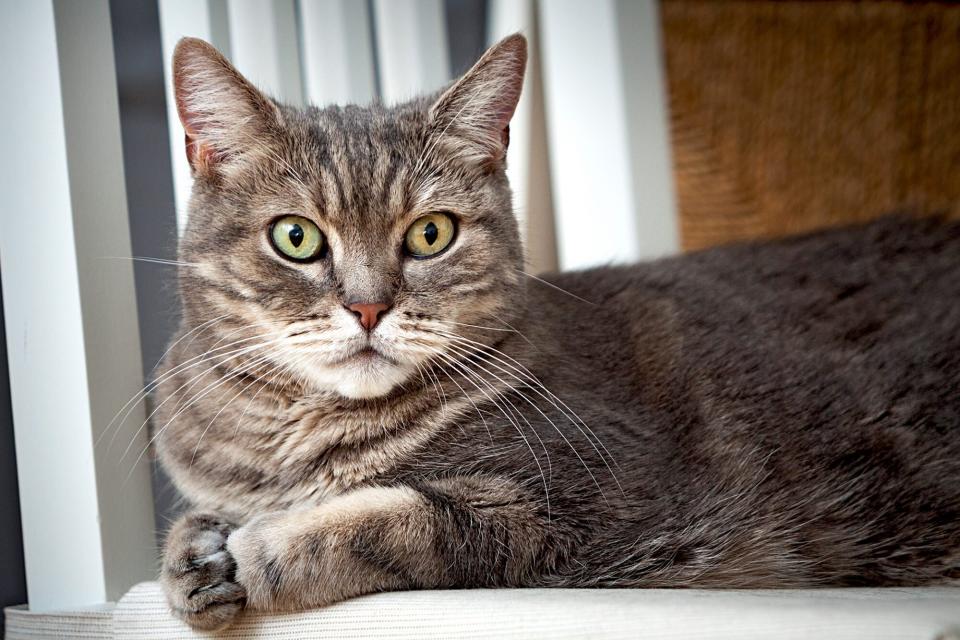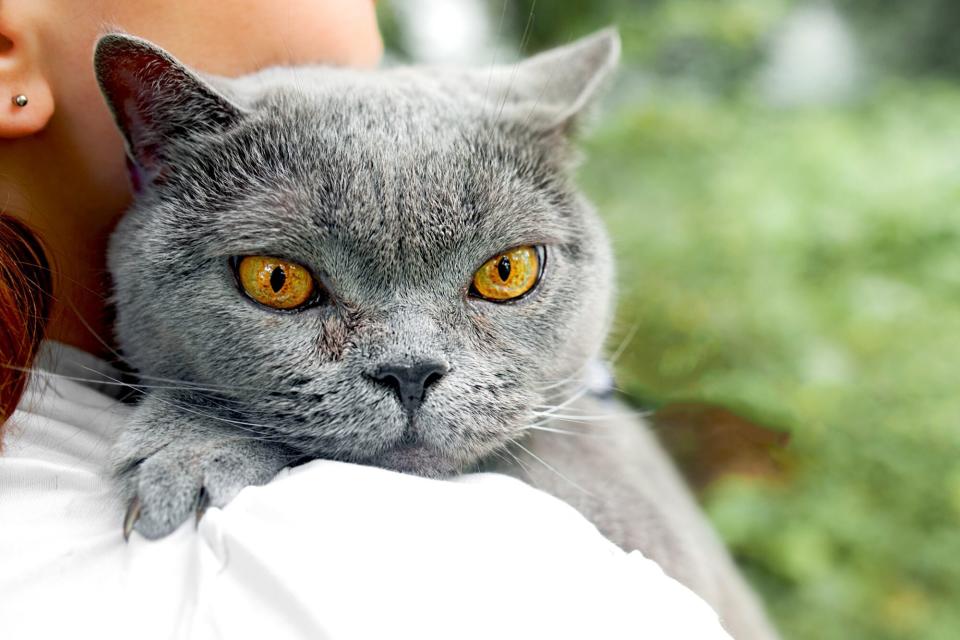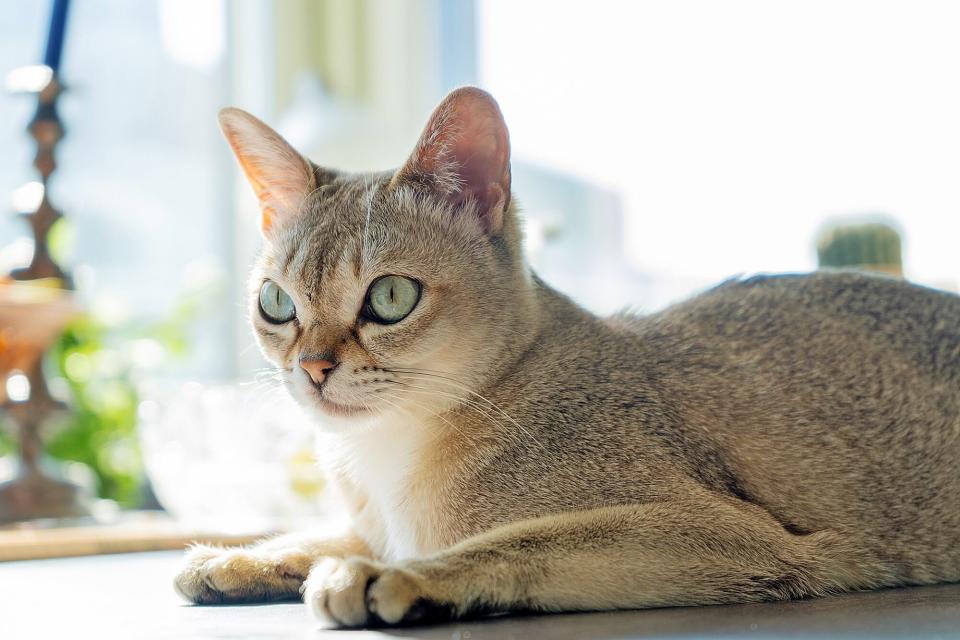10 Short Hair Cat Breeds Who Are Perfectly Suited to Sharing Life With

Jaroslaw Kurek / Shutterstock
What's in a name? For cats, it's often pretty simple. Some of the most popular cat breeds are defined by the length of their luxurious locks—take the British shorthair or American shorthair (two of the 10 most popular cat breeds in the world) for example. For cats with unknown lineage, fur length also becomes a key descriptor.
"Traditionally cats have been divided into short haired and long haired," says Bonnie Bragdon, DVM, president and co-founder of the Independent Veterinary Practitioners Association. "As a matter of fact, when a cat's breed is unknown a veterinarian will list the cat as a 'DSH' (i.e. domestic short haired cat), 'DMH' (i.e. domestic medium haired cat), and 'DLH' (i.e. domestic long haired cat)."
Of course, a feline's fur is just one feature that distinguishes them from other breeds. Short hair cat breeds, generally speaking, require less grooming and may shed less than other cats, but each breed is unique in their own right.
American Shorthair

tramp51 / Adobe Stock American shorthairs can have coats in essentially any color and pattern, but the breed is defined by its broad and muscular body.
Thick-coated and strong, the American shorthair cat has long been enemy to vermin stalking American soil—early ancestors of the American shorthair made quite the mousers aboard the Mayflower. Today's American shorthair cats are friendly family pets, fitting in well with children and furry friends alike. Much like the less-strictly-defined domestic short haired cat, American shorthairs range dramatically in coat and eye color. Nonetheless, their stout stature, short ears, and round faces serve as distinct identifiers of a proud purebred pedigree.
RELATED: 8 Kid-Friendly Cat Breeds to Consider if You're Looking to Expand Your Family
European Shorthair

avirid / Adobe Stock
Like the American shorthair, the European shorthair is a muscular mouser well-recognized in their home continent, though they are rarer in other parts of the world. They stand out from their "American" counterparts with a bit stockier build but also come in a variety of colors. Well-suited for family life, some European shorthairs may not take as well to strangers or other household pets, but with a long lineage, temperament differs depending on the cat. One thing these kitties have in common? They take a great deal of pride in their appearance, satisfying most of their grooming needs themselves—a weekly brush-through on your part should do the trick!
British Shorthair

Aleksandra Pavlova / Getty
Rotund and teddy-bear-esque, it's no surprise British shorthairs rounded out the top five most popular cat breeds in the world this past year. Often carrying blue-gray coats, these beauties are affectionately called British blues. Cheery and chubby-cheeked, the British shorthair is a delightful family pet just as content to curl up on the couch as he is to chase after a favorite toy from time to time.
Exotic Shorthair

joke50e / Shutterstock
A double take may be required for these Persian doppelgangers. With their flat faces and round eyes, the exotic shorthair is nearly a dead ringer for the popular Persian breed, with one key distinction: short hair! Unlike their cousins' considerable coats, these low-maintenance cats require little outside of a weekly brushing. In 2020, they nearly topped the list of most popular cat breeds in the world, snagging the number two spot, while the Persian ranked number four.
Oriental Shorthair

Leschenko / Getty
Spoiler alert: If Dobby's death in "Harry Potter" still brings tears to your eyes, the Oriental shorthair cat might catch you by surprise. Their long ears atop narrow noses draw adorable Dobby to mind. Much like the house elf, they are total chatterboxes, eager to be around you and let you know how they're doing. They prefer a pal over riding solo, so adding another pet to the home is a good idea.
Burmese

Vladimir Fedorov / Getty A Burmese cat's big, round, gold eyes always seem to be looking up at you and asking, "do you want to play?"
Soft and silky, the Burmese is best recognized for a dark sable coat, but brown, blue, cream, and even red coats are possible, almost always as a single solid color. If dogs are more your speed, don't count out the boisterous Burmese—highly social and craving companionship, they are often described as dog-like. These cats don't like to be left alone for long periods of time and enjoy stimulating environments with their people, complete with toys, window access, and perhaps even a friendly game of fetch.
Devon Rex

Jaroslaw Kurek / Shutterstock
Speaking of cats resembling their canine counterparts, the Devon rex is the poodle of kitties, boasting fine, wavy fur well-suited for pet parents with allergies—curly coats are often easier on sniffle-prone owners. However, the breed is a bit higher maintenance than other short hair cat breeds, with regular bathing recommended to combat greasy fur. Playful and active, toys, cat trees, and plenty of attention are the keys to a happy kitty.
Manx

valleevalley / Adobe Stock
Don't panic—the case of the Manx with the missing tail is due to a naturally occurring genetic mutation in the breed, causing most of the descendants to have short, stumpy tails or no tails at all (adorably referred to as rumpies). What they lack on their behinds, they more than make up for with their thick double coats, best brushed daily to keep up with shedding, which the Manx does frequently compared to other short haired breeds.
Singapura

Viktoras / Adobe Stock
Weighing as little as 4 pounds and typically maxing out at no more than 8 pounds, the petite Singapura is the smallest domestic cat breed. Their adorable daintiness is emphasized by their large eyes and ears, which steal the show atop their slim frames. Their personalities are also larger than life, demanding attention despite their demure appearance. Owners with a silly streak will appreciate a lifelong kitten-like companion by their side.
Tonkinese

Flutter_97321 / Getty Images
The Tonkinese is the offspring of Siamese and Burmese parentage, sharing many of the beloved qualities of these breeds, including the short, silky fur noted in the Burmese. Much like the Burmese, Tonkinese cats are people pleasers and love being at the center of attention, not aloof to guests as other breeds may be but rather fully immersed in the happenings of your home. Watch out though—if he feels ignored, he may stir up a little trouble just to keep things exciting. Plenty of cat toys, scratching posts, and cat trees should keep mischief at bay.
So, Do Short-Haired Cats Shed or Not?
As you may have gleaned by now, short-haired cats aren't exempt from shedding, but certain breeds may be better for owners with allergies than others. Not to mention, most require minimal grooming to keep hair in line. Still, every cat is different.
"Wavy, curly, or short hair may cause less of a reaction because there is less hair to shed into the environment," Bragdon says. "There is no scientific proof that any specific breed is less or more allergenic, and individual cats produce allergens in variable amounts."
In short, it's not always as easy as limiting the home to a specific breed. Bragdon recommends potential pet parents plagued by allergies start out with single cat ownership to minimize allergen exposure.
